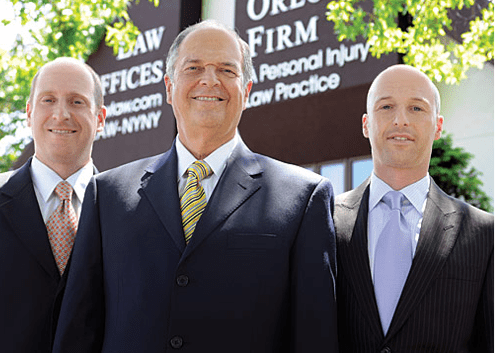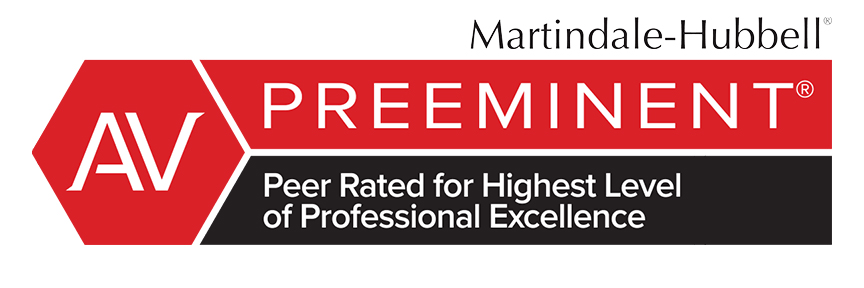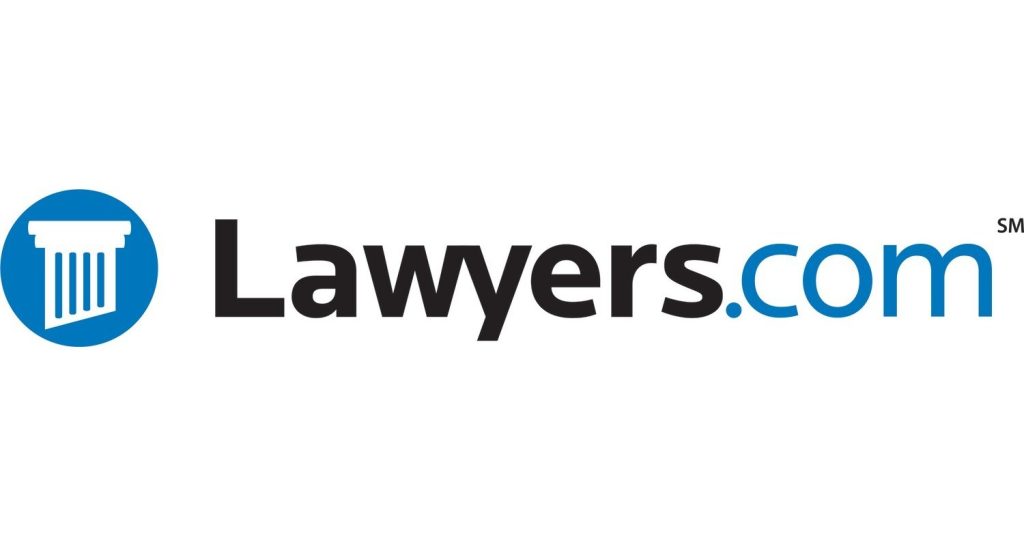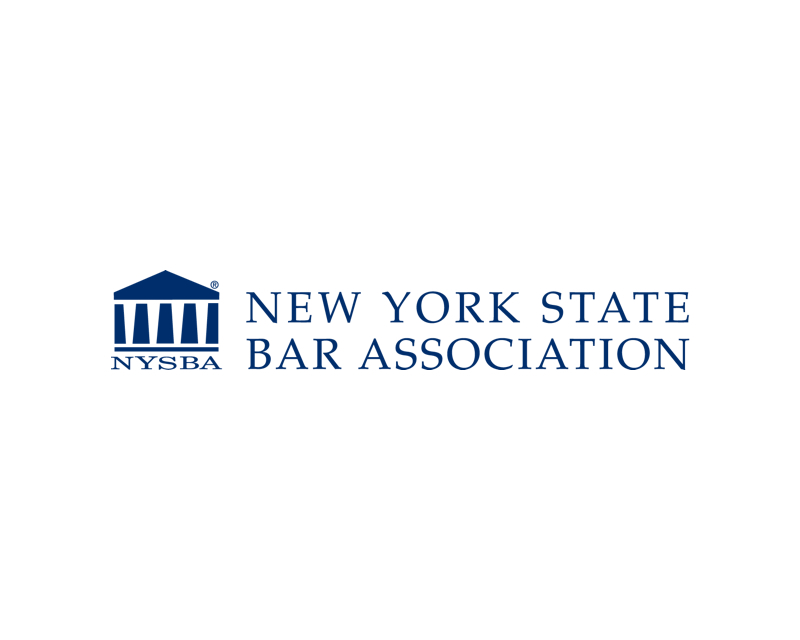What Is Failure to Warn in Personal Injury Cases?
Quick Answer: Failure to warn in personal injury cases happens when a company or person does not give proper safety information about a product or situation. This lack of warning can lead to injuries if people are unaware of the risks. In New York City, injured individuals may seek compensation if they were harmed due to missing or inadequate warnings.
How Failure to Warn Leads to Injuries in New York City
Failure to warn occurs when a manufacturer, seller, or property owner does not provide adequate warnings about a product or condition that could cause harm. In New York City, this lack of warning can directly lead to serious injuries because people may not realize the risks involved. Without clear warnings, individuals might use products incorrectly or expose themselves to dangers they would have otherwise avoided.
Here are some ways failure to warn can lead to injuries in NYC:
- Unaware of hidden dangers: Some products or situations have risks that are not obvious. For example, a cleaning chemical might cause burns if used improperly, but without a warning label, a person might not know to wear gloves or avoid inhaling fumes.
- Misuse of products: Without proper instructions or warnings, people might use a product in a way that is unsafe. This can cause accidents or injuries, such as electric shocks from using a faulty appliance incorrectly.
- Inadequate safety precautions: In public places or workplaces in NYC, failure to post warning signs about slippery floors, construction zones, or hazardous materials can lead to falls, slips, or other accidents.
- Delayed medical treatment: If people are not warned about symptoms or side effects of a product, they may not seek medical help in time, which can worsen injuries or cause permanent harm.
New York City’s busy environment means many products and services are in use daily, increasing the chance that a lack of proper warnings can result in harm. For example, a subway station without clear warnings about wet floors or uneven steps can cause falls. Similarly, defective products sold without proper cautionary labels can cause burns, cuts, or other injuries.
Because of these risks, the law requires companies and property owners to warn consumers and visitors about dangers that are not obvious. When they fail to do so, injured individuals may have the right to seek compensation for their injuries. Understanding how failure to warn causes harm is an important step in protecting your rights under New York personal injury law.
Common Examples of Failure to Warn in Personal Injury Claims
Failure to warn claims arise when a manufacturer, seller, or property owner does not provide proper warnings about a product or condition that could cause harm. In personal injury cases, these warnings help people avoid danger. When warnings are missing, unclear, or inadequate, injuries can result. Here are some common examples of failure to warn in personal injury claims, especially relevant in New York City:
- Defective Products Without Adequate Warnings: A common example involves products that have hidden dangers. For instance, a chemical cleaner sold without clear labels about its toxic effects or necessary safety steps can cause burns or poisoning. If the manufacturer fails to warn users properly, they may be liable for resulting injuries.
- Unsafe Property Conditions: Property owners in NYC must warn visitors about dangerous conditions. For example, if a stairway is broken or slippery and no warning signs are posted, a person may slip and fall. Failure to provide warnings about hazards like wet floors, broken railings, or uneven sidewalks can lead to injury claims.
- Medical Device or Drug Warnings: Pharmaceutical companies and medical device manufacturers have a duty to warn patients and doctors about potential side effects or risks. If a medication causes serious harm and lacked proper warnings about those risks, patients may file failure to warn claims.
- Workplace Hazards: Employers must inform workers about risks related to equipment or chemicals used on the job. For example, if a construction site has exposed wiring but lacks clear warning signs, workers may get injured. Failure to warn employees about such dangers can lead to personal injury claims.
- Consumer Products with Insufficient Instructions: Some products require specific instructions to be used safely. If a power tool or appliance is sold without clear instructions or warnings about potential dangers, injuries can occur. For example, a hair dryer without warnings about water exposure may cause electric shock.
- Toys and Children’s Products: Products designed for children must include warnings about choking hazards or age restrictions. Failure to warn parents or caregivers properly about these risks can result in injuries and legal claims.
In New York City, where many people use public transportation, work in diverse industries, and live in densely populated areas, failure to warn injuries can happen in various settings. Whether it’s a defective product bought at a local store or an unsafe condition in a building, the lack of proper warnings can cause serious harm.
If you believe you have been injured because of a failure to warn, it is important to understand the specific facts of your case. Gathering evidence about the warnings provided—or not provided—is key to proving your claim.
Legal Duties to Warn: Who Is Responsible?
In failure to warn cases, the legal duty to warn rests primarily on those who design, manufacture, distribute, or sell a product or create a condition that could cause harm. These parties have a responsibility to alert users or consumers about any dangers or risks associated with their product or environment. This duty exists to help prevent injuries that might occur if someone uses a product or encounters a hazard without knowing the risks.
Here are the main parties who may have a legal duty to warn in personal injury cases in New York City:
- Manufacturers: Companies that make products must provide clear warnings about any known risks, especially if those risks are not obvious to the average person. For example, if a chemical product can cause burns, the manufacturer must include warnings about proper handling and protective gear.
- Distributors and Retailers: Businesses that sell or distribute products also have a duty to pass along warnings provided by the manufacturer. They must not sell products without proper warnings or labels that inform users about potential dangers.
- Property Owners and Employers: In some cases, property owners or employers have a duty to warn visitors or employees about known hazards on their property. For example, if a floor is slippery, they must place warning signs to prevent accidents.
- Designers and Engineers: Those who design products or environments must consider safety and include warnings for risks that cannot be removed through design changes.
In New York, the duty to warn is part of product liability and premises liability laws. The law expects responsible parties to provide adequate warnings so that people can use products or navigate spaces safely. If a warning is missing, unclear, or inadequate, and that failure causes injury, the responsible party may be held legally accountable.
It is important to note that the duty to warn applies when the risk is not obvious or well-known. If a hazard is something a reasonable person would easily recognize, the duty to warn may not apply. For example, a knife’s sharp edge is an obvious danger, so a manufacturer might not need to warn about that specifically. But if a product has hidden risks, warnings become essential.
In New York City, where many products and environments are regulated, companies and property owners must follow strict rules about warnings and labels. Failure to meet these standards can lead to personal injury claims if someone is hurt because they were not properly warned.
If you or a loved one has been injured because of a failure to warn, it is important to understand who might be responsible. Identifying the party with the legal duty to warn is a key step in building a claim. For help understanding these responsibilities and your rights, you can contact The Orlow Firm at (646) 647-3398.
How New York Law Addresses Failure to Warn Claims
New York law treats failure to warn claims as part of product liability or negligence cases. When someone is injured because a manufacturer, seller, or another party did not provide proper warnings about a product’s dangers, New York law allows injured individuals to seek compensation. However, there are specific rules that apply to these claims.
Duty to Warn: In New York, companies that make or sell products have a legal duty to warn consumers about any known risks that are not obvious. This means if a product has a hidden danger or could cause harm if used incorrectly, the manufacturer or seller must provide clear warnings or instructions to help prevent injury.
Types of Warnings can include:
- Labels on the product packaging or the product itself.
- Instruction manuals or leaflets explaining safe use.
- Verbal warnings in some cases, especially if the product is sold directly to consumers.
How New York Courts View Failure to Warn Claims: To win a failure to warn case in New York, the injured person must prove several things:
- There was a duty to warn —the defendant was responsible for giving a warning about a risk.
- The warning was inadequate or missing —the defendant failed to provide enough information to alert users to the danger.
- The lack of warning caused the injury —the injury happened because the person did not know the risk due to the missing or insufficient warning.
- The product was used as intended or in a way that the manufacturer could expect.
Comparative Fault in New York: New York follows a rule called “pure comparative negligence.” This means if the injured person shares some blame for their injury—for example, by ignoring a clear warning—their compensation may be reduced based on their percentage of fault. But they can still recover damages even if they were partly responsible.
Statute of Limitations: In New York, failure to warn claims generally must be filed within three years from the date the injury occurred or was discovered. This time limit is important because missing it can prevent someone from making a legal claim.
Special Considerations in New York City: Because New York City is densely populated and has many industries, failure to warn claims often involve products used in workplaces, public spaces, or homes. For example, injuries related to construction equipment, household appliances, or chemicals may arise from inadequate warnings. New York law applies equally in the city, but cases can be more complex due to the variety of products and parties involved.
Overall, New York law aims to balance protecting consumers from dangerous products with fairness to manufacturers and sellers. If you believe you were hurt because a company failed to warn you properly, it is important to understand these legal rules and deadlines.
If you have questions about how New York law applies to your failure to warn injury, contact The Orlow Firm at (646) 647-3398 to discuss your situation and learn about your options.
Proving Failure to Warn in a Personal Injury Case
To prove a failure to warn claim in a personal injury case in New York City, the injured person must show several key facts. This means providing evidence that clearly connects the injury to the lack of a proper warning. Courts require proof that the responsible party did not meet their duty to warn about a known danger.
Here are the main elements that must be established to prove failure to warn:
- Duty to Warn: The injured person must show that the defendant had a legal duty to provide a warning. This duty often arises when a product, property, or activity carries a risk that is not obvious to an average person. For example, manufacturers and sellers have a duty to warn consumers about hidden dangers in their products.
- Failure to Provide Adequate Warning: It must be proven that the defendant did not give a proper warning or gave a warning that was unclear, misleading, or insufficient. This includes failing to provide instructions, labels, or other notices that would alert a reasonable person to the risk.
- Injury Caused by the Lack of Warning: The injured person must show that the injury happened because of the missing or inadequate warning. If a warning had been given, the injury could have been avoided or reduced. This means proving a direct link between the failure to warn and the harm suffered.
- Foreseeability: It must be shown that the defendant could have reasonably foreseen that failing to warn might cause harm. This means the danger was known or should have been known by the defendant at the time the product was made or the situation occurred.
Proving these elements often requires collecting strong evidence. This may include:
- Product labels, manuals, or instructions (or the lack of them)
- Expert testimony explaining the standard warnings expected in the industry
- Medical records documenting the injuries
- Photographs or videos showing the product, accident scene, or conditions
- Witness statements describing how the injury happened
In New York, courts also consider whether the warning was clear and understandable to an average user. A warning that is too vague or hidden may not be enough to protect the defendant from liability.
For example, if a consumer buys a household cleaner without a warning about harmful fumes and suffers injury from inhaling it, they may have a failure to warn claim if the manufacturer did not include an adequate warning label.
It is important to act quickly and gather evidence soon after the injury. Warnings, labels, or instructions can be changed or lost over time, making it harder to prove the claim.
If you have been injured in New York City because of a failure to warn, documenting the facts and seeking legal advice promptly can help protect your rights. For assistance, contact The Orlow Firm at (646) 647-3398.
The Role of Warning Labels and Instructions in NYC Cases
Warning labels and instructions play an important role in personal injury cases involving failure to warn claims in New York City. These labels and instructions are meant to alert consumers and users about potential risks or dangers associated with a product or situation. When they are missing, unclear, or inadequate, they can contribute to accidents and injuries.
In many failure to warn cases, the central question is whether the manufacturer, distributor, or property owner provided enough information to help people avoid harm. Warning labels and instructions serve as a key way to fulfill this duty to warn.
Here are some ways warning labels and instructions impact failure to warn claims in NYC:
- Establishing Duty: Companies have a legal duty to warn about known dangers that are not obvious. Proper labels and clear instructions help show that this duty was met.
- Determining Negligence: If a product lacks adequate warnings or instructions, or if the warnings are confusing, a court may find that the responsible party was negligent.
- Assessing Causation: Courts look at whether the absence or inadequacy of warnings directly led to the injury. For example, if a person would have avoided the risk had they been properly warned, failure to warn may be proven.
- Comparing Industry Standards: The quality and clarity of warnings are often compared to industry norms in NYC and nationwide to decide if they were sufficient.
In New York City, failure to warn cases often involve products like machinery, household items, chemicals, or pharmaceuticals. For example, a power tool without a clear warning about sharp blades or electrical hazards could lead to injury. Similarly, medications without proper instructions about side effects or dosage risks may cause harm.
It is also important to note that warnings must be visible and understandable to a typical user. Small print, complicated language, or hidden instructions may not meet legal standards. In NYC, where diverse populations use products, warnings should be clear and accessible.
When pursuing a failure to warn claim, evidence related to warning labels and instructions is critical. This can include:
- Photographs of the product and its labels or manuals.
- Expert testimony on the adequacy of warnings.
- Records of industry standards for warnings.
- Testimony from the injured person about their understanding of the warnings.
Overall, warning labels and instructions serve as a key safeguard to protect the public. When they fail to provide adequate notice of risks, injured New Yorkers may have grounds for a personal injury claim based on failure to warn.
If you or a loved one has been hurt due to missing or unclear warnings in New York City, it is important to seek legal advice promptly. The Orlow Firm can help review your case and explore your options. Contact us at (646) 647-3398 for a confidential consultation.
What Victims Should Do After a Failure to Warn Injury
If you have been injured because someone failed to warn you about a danger, it is important to take certain steps right away. Acting quickly can help protect your health and your legal rights. Here is what you should do after a failure to warn injury in New York City:
- Seek medical attention immediately. Even if your injury seems minor, get checked by a doctor as soon as possible. Some injuries may not be obvious right away. Medical records will also be important if you decide to pursue a legal claim.
- Preserve evidence related to the warning or lack of warning. Keep the product, packaging, manuals, or any other materials involved. Take photos of the product and the injury. Save any labels, instructions, or warnings that were supposed to be included.
- Write down what happened. As soon as you can, record details about the incident. Include where and when the injury occurred, what you were doing, and what warnings (if any) you saw or did not see. This information will help your case later.
- Identify the responsible parties. Find out who made, sold, or distributed the product. Sometimes multiple companies can be involved. Knowing this helps when filing a claim.
- Report the injury if necessary. In some cases, you may need to report the injury to government agencies, such as the Consumer Product Safety Commission (CPSC), especially if a dangerous product is involved.
- Avoid discussing the injury or admitting fault with the company or insurer. Be cautious about what you say to the company that made or sold the product or to their insurance company. Anything you say might be used against you later.
- Contact a personal injury attorney experienced in failure to warn cases. An attorney can explain your rights, help gather evidence, and guide you through the legal process. They can also explain how New York law applies to your situation and what compensation you might be able to seek.
Failure to warn cases can be complex. Taking these steps early helps protect your ability to hold the right parties accountable. If you have questions about a failure to warn injury in New York City, you can reach out to The Orlow Firm at (646) 647-3398 for a confidential discussion about your situation.
Time Limits for Filing Failure to Warn Claims in New York
In New York, there are strict time limits for filing personal injury claims, including those based on failure to warn. These time limits are called statutes of limitations. They set the deadline by which you must start a lawsuit. If you miss this deadline, the court will most likely dismiss your case, and you will lose the right to seek compensation.
For failure to warn claims, which usually fall under product liability or general negligence law, the typical statute of limitations in New York is:
- Three years from the date you were injured or first became aware of the injury caused by the failure to warn.
This means you generally have three years from the moment you know or should have known that an injury happened because of a missing or inadequate warning. However, there are some important details to keep in mind:
- Discovery Rule: Sometimes, the injury caused by the failure to warn is not immediately clear. In such cases, New York law may allow the clock to start ticking when you discover, or should have discovered, the injury and its connection to the product or situation without proper warning.
- Product Liability Claims: For cases involving defective products, the three-year limit usually applies from the date of injury. But if the injury is latent (hidden and not obvious right away), the discovery rule can extend this period.
- Claims Against Government Entities: If your failure to warn claim involves a government agency, there may be shorter notice periods or special rules. It’s important to act quickly and understand these differences.
Because the timing can be complex, it is important to start the claim process as soon as possible after an injury. Waiting too long can prevent you from filing a claim, even if the case has merit.
In a busy place like New York City, where many products and services are used daily, injuries caused by a failure to warn can happen unexpectedly. If you believe you have been hurt because of a missing or inadequate warning, contacting a personal injury attorney promptly can help protect your rights and ensure you meet all filing deadlines.
If you have questions about the time limits for filing a failure to warn claim in New York, you can reach The Orlow Firm at (646) 647-3398 for a confidential discussion about your situation.
Possible Damages in Failure to Warn Personal Injury Cases
In failure to warn personal injury cases, victims may be entitled to several types of damages. These damages are meant to compensate for losses suffered because a company or individual did not provide proper warnings about a dangerous product or condition.
Here are the common types of damages you might see in a failure to warn case in New York City:
- Medical Expenses: This includes costs for hospital stays, surgeries, doctor visits, therapy, medication, and any future medical care related to the injury.
- Lost Wages: If your injuries prevent you from working, you can claim compensation for the income you lost during your recovery period.
- Loss of Earning Capacity: If your injury affects your ability to earn money in the future, you may be compensated for the reduced earning potential.
- Pain and Suffering: This covers physical pain and emotional distress caused by the injury. It is a non-economic damage, meaning it is not about money lost but about quality of life.
- Disfigurement or Disability: If the injury causes permanent scars, disfigurement, or lasting disability, damages may be awarded for these impacts.
- Property Damage: In some cases, if personal property was damaged due to the failure to warn, you might recover the cost to repair or replace it.
It is important to understand that New York law requires claimants to prove that the failure to warn directly caused the injury. This means you must show that if the warning had been given, the injury could have been avoided.
Because of the complexity of these claims, damages can vary widely based on the facts of each case. For example, a New Yorker injured by a defective household product without proper warnings may recover medical bills, lost income, and pain and suffering damages if the failure to warn is proven.
Additionally, New York courts may consider how severe the injury is, how the lack of warning contributed to the accident, and the extent of the defendant’s responsibility when deciding on damages.
If you or a loved one has been hurt because of a failure to warn about a dangerous product or condition, it’s important to understand the types of damages you may be able to pursue. For more information or help with your case, please contact The Orlow Firm at (646) 647-3398.
How Evidence Is Gathered in Failure to Warn Lawsuits
Gathering evidence in failure to warn lawsuits is a critical step in proving that a company or manufacturer did not properly warn consumers about a product’s dangers. This process involves collecting facts and documents that show the warning was missing, inadequate, or unclear. In New York City, where many products and services are available, careful evidence collection helps build a strong case for injured victims.
Here are some common ways evidence is gathered in failure to warn personal injury cases:
- Product Inspection: The actual product involved in the injury is examined to check if it had any warning labels, instructions, or safety notices. This helps show what warnings were provided to the consumer.
- Photographs and Videos: Pictures or videos of the product, the injury scene, and any warning labels are collected. These visual records can support claims about missing or unclear warnings.
- Medical Records: Detailed medical reports document the injury and its connection to the product. These records help prove the harm caused by the failure to warn.
- Company Documents: Internal documents, such as emails, memos, design plans, and marketing materials, may reveal what the manufacturer knew about the product’s risks and whether they chose to warn consumers.
- Expert Testimony: Specialists in product safety, engineering, or medicine may review the evidence and explain whether the warnings were adequate or if the lack of warning caused the injury.
- Witness Statements: Statements from people who saw the injury occur, used the product, or have knowledge about the warnings can provide valuable information.
- Industry Standards and Regulations: Evidence about what warnings are typically required for similar products can show if the manufacturer failed to meet legal or safety standards.
In New York, gathering solid evidence often requires careful coordination and sometimes legal tools like subpoenas to obtain company records. The evidence must clearly link the lack of warning to the injury suffered.
For example, if a consumer in NYC was injured by a household product that did not include a clear warning about a known risk, investigators would collect the product, look for labels, gather medical reports, and seek documents from the manufacturer about what they knew. Experts might then review this information to determine if the warning was missing or insufficient.
Collecting evidence promptly after the injury is important because products may be altered, lost, or destroyed over time. Keeping records and preserving the product can make a significant difference in building a strong failure to warn claim.
Contacting The Orlow Firm About Your Failure to Warn Case

If you believe you have a failure to warn personal injury case in New York City, contacting The Orlow Firm can be an important step toward understanding your legal options. Failure to warn claims involve situations where a company or individual did not provide adequate warnings about risks or dangers, which then caused your injury. These cases can be complex and require careful review of the facts and evidence.
When you reach out to The Orlow Firm, you can expect a thoughtful and confidential discussion about your situation. During this conversation, it is helpful to provide as much information as possible, such as:
- Details of the injury: How and when the injury happened, and what harm you suffered.
- Warnings or instructions: Whether you received any warnings or instructions about the product, service, or condition involved.
- Medical records: Documentation of your treatment, diagnosis, and recovery progress.
- Evidence of the product or condition: Photographs, packaging, manuals, or other materials that relate to the warning or lack thereof.
- Any communication: Correspondence with manufacturers, sellers, or other parties related to the issue.
Providing these details helps the attorneys at The Orlow Firm evaluate whether a failure to warn claim is appropriate in your case under New York law. The firm can then explain the legal standards involved, including what the responsible parties are required to do to warn consumers or users.
Once your case is reviewed, The Orlow Firm can guide you through the next steps, which may include:
- Gathering additional evidence to support your claim.
- Communicating with insurance companies or opposing parties.
- Filing a formal personal injury lawsuit if needed.
- Negotiating settlements to cover your medical bills, lost wages, and other damages.
Because failure to warn claims often involve technical details about products or warnings, having legal guidance can ensure that your rights are protected. The attorneys at The Orlow Firm are familiar with how New York courts handle these cases and can explain the process clearly.
If you or a loved one has been hurt due to a lack of proper warnings, do not hesitate to contact The Orlow Firm at (646) 647-3398. Early consultation can help preserve important evidence and improve your chances of a fair outcome. The firm offers compassionate support and can answer your questions about how failure to warn laws apply in New York City.









